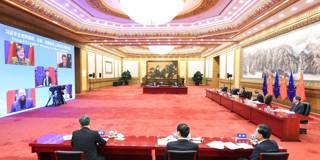Over the past eight years, the climate outlook has darkened, and the Paris climate agreement has come to seem like a pipe dream. But China is demonstrating that sustainable development is still possible, both as a matter of domestic policy and in international negotiations.
LONDON – One of the most memorable lines in cinema, Rick Blaine’s farewell to Ilsa Lund in Casablanca – “We’ll always have Paris” – evokes both nostalgia and a sense of longing for unattainable ends. It has thus become an ideal refrain within international climate governance circles. Everyone remembers that high point in late 2015, when 192 countries adopted the Paris climate agreement and committed to keeping average global temperatures below 2° Celsius (and preferably within 1.5°C) of pre-industrial levels.

LONDON – One of the most memorable lines in cinema, Rick Blaine’s farewell to Ilsa Lund in Casablanca – “We’ll always have Paris” – evokes both nostalgia and a sense of longing for unattainable ends. It has thus become an ideal refrain within international climate governance circles. Everyone remembers that high point in late 2015, when 192 countries adopted the Paris climate agreement and committed to keeping average global temperatures below 2° Celsius (and preferably within 1.5°C) of pre-industrial levels.